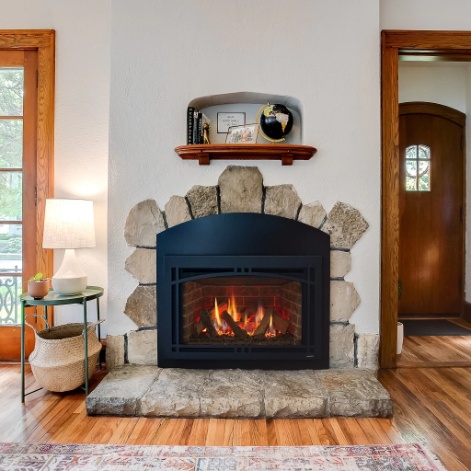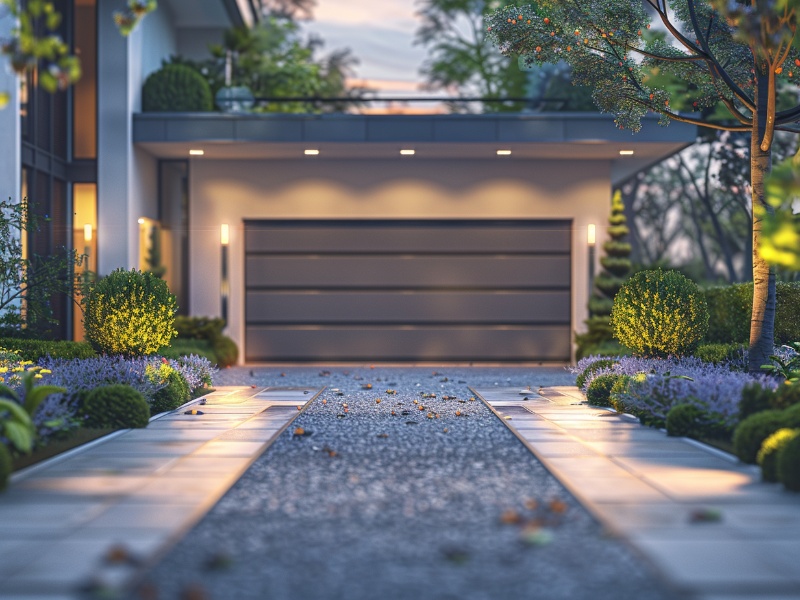Table of Contents
Fireplaces have historically served as focal points in residences, offering both warmth and ambiance.
The development of fireplace burner systems has revolutionized the perception and utilization of these conventional elements.
We will examine the distinctions between traditional and contemporary burner systems.
We’ll also discuss the advantages of transitioning to a modern system.
Additionally, we’ll explore the array of modern burners accessible, particularly gas and electric variants.
Factors to consider during installation and maintenance will be covered as well.
Finally, we’ll provide guidance for selecting an appropriate system for your residence.
Discover how contemporary fireplace burner systems can augment the efficiency, visual appeal, and overall satisfaction derived from your home.
The Evolution of Fireplace Burner Systems
The progression of fireplace burner systems has markedly altered how contemporary fireplaces enhance our living spaces.
By incorporating advanced technology and offering a range of fuel choices, including gas and wood, these systems seamlessly blend functionality with aesthetic appeal and ambiance.
Traditional vs. Modern Burner Systems
The disparity between traditional and modern burner systems is substantial, encompassing efficiency, safety, maintenance, and aesthetics.
Modern fireplaces present an array of advancements and user-friendly features.
Traditional burner systems typically necessitate manual ignition methods.
This demands consistent monitoring and upkeep to ensure safe functioning.
Conversely, modern burner systems boast automatic ignition mechanisms and sophisticated safety sensors.
This delivers a more secure and convenient experience for users.
Modern burners commonly exhibit a sleek and sophisticated aesthetic.
They offer customizable design options that harmonize with diverse interior styles.
In contrast, traditional burners often exude a more rustic or classical appearance.
Benefits of Modern Fireplace Burner Systems
Contemporary fireplace burner systems provide numerous advantages that improve efficiency, convenience, design, and overall home enhancement.
They incorporate advanced functionality and aesthetics into residential areas.
Efficiency and Convenience
Contemporary fireplaces have been specifically crafted to optimize efficiency and convenience.
They employ cutting-edge technology to offer energy-efficient heating solutions tailored for modern residences.
These state-of-the-art fireplaces frequently integrate programmable thermostats.
This enables users to establish desired temperatures and schedule heating intervals.
As a result, maximum comfort is ensured while curbing energy consumption.
Moreover, certain models are furnished with remote control functionalities.
This permits users to adjust settings conveniently from any location within the room.
Additionally, numerous modern fireplaces are embellished with LED lighting to enhance ambiance.
They can be effortlessly operated with a simple touch of a button.
These intuitive features render modern fireplaces an increasingly popular selection among homeowners.
Design and Aesthetics
The design and aesthetics of contemporary fireplaces significantly impact the ambiance of a living space.
They are characterized by sleek, clean lines and customizable features that cater to a range of decor styles.
These modern fireplace designs not only function as practical heating sources but also serve as focal points that enhance the overall aesthetic of a room.
The refined lines and minimalist design of contemporary fireplaces evoke a sense of sophistication and refinement.
This positions them as a popular choice in the realm of interior design.
Moreover, the availability of customizable options allows homeowners to personalize the fireplace.
They can choose from various finishes, sizes, and fuel types to seamlessly complement their home’s existing style.
Types of Modern Fireplace Burner Systems
Various types of contemporary fireplace burner systems are currently available, encompassing gas, electric, and wood options.
Each of these options presents distinct advantages and heating solutions tailored to accommodate a range of residential requirements.
Gas Burners
Gas burners are a prevalent choice for contemporary fireplaces due to their remarkable efficiency and substantial heat output.
They offer the versatility of utilizing either propane or natural gas.
Propane and natural gas present distinct advantages in the realm of fireplace installations.
Propane, commonly stored in tanks, affords greater flexibility for positioning without the requirement of a direct connection to a gas line.
Conversely, natural gas proves to be more convenient for homeowners with access to a gas line.
It furnishes a consistent and cost-efficient fuel source.
Both alternatives yield cleaner combustion relative to conventional wood-burning fireplaces.
This diminishes air pollution levels and reduces maintenance demands.
Electric Burners
Electric burners offer a convenient and secure heating alternative for contemporary fireplaces.
They are characterized by straightforward installation and maintenance-free operation.
These burners have been engineered to provide homeowners with a hassle-free heating solution.
This eliminates the necessity for regular maintenance and upkeep.
The sophisticated and contemporary design of electric burners seamlessly integrates with various home decor styles.
They enhance the cozy ambiance of any living space.
Featuring adjustable temperature settings and user-friendly controls, these burners present a simple method for establishing a warm and inviting atmosphere.
Additionally, their energy-efficient properties make them a cost-effective option.
This is ideal for individuals seeking to curtail utility expenses while enjoying the advantages of a conventional fireplace.
Installation and Maintenance
The correct installation and upkeep are imperative to guaranteeing the secure and effective functioning of contemporary fireplaces.
This applies whether opting for professional installation or a do-it-yourself approach.
Professional Installation vs. DIY
The decision between professional installation and a do-it-yourself (DIY) approach for a modern fireplace installation hinges on several factors.
Notably, safety considerations and the requisite level of expertise are crucial.
Professional installation presents the advantage of skilled technicians overseeing the intricate process.
This guarantees adherence to safety regulations and construction codes.
It instills confidence in knowing that the fireplace has been correctly and efficiently installed.
Conversely, a DIY approach can offer cost savings and a more hands-on involvement in the project.
However, it necessitates a certain level of proficiency to manage potentially dangerous tasks.
These tasks include gas line connections and venting systems.
Emphasizing safety remains paramount, whether opting for professional installation or undertaking the endeavor independently.
Tips for Proper Maintenance
Regular maintenance is crucial for ensuring the safety and efficiency of a modern fireplace.
Specific guidelines for managing logs, flames, and other components are essential.
Regarding the management of logs in a fireplace, utilizing seasoned hardwood that has been appropriately dried for optimal burning is imperative.
The arrangement of logs in a crisscross pattern can enhance airflow and promote a more consistent burn.
Monitoring the flames is of utmost importance; they should display a vibrant blue hue.
This hue indicates efficient combustion.
Routine inspection and cleaning of vents and chimneys are necessary to prevent blockages.
This helps maintain adequate ventilation.
By adhering to these maintenance protocols, individuals can enjoy a secure and inviting fireplace ambiance throughout the entire season.
Choosing the Right Fireplace Burner System for Your Home
Selecting the appropriate fireplace burner system for your residence necessitates considering several factors.
These include heating requirements, aesthetic preferences, and a thorough cost analysis.
All of this helps ascertain the most suitable option for your living environment.
Factors to Consider
Various factors must be taken into account when selecting a contemporary fireplace burner system.
This encompasses heating requirements, design preferences, and overall functionality.
To effectively meet heating needs, it is imperative to evaluate the dimensions of the area that the fireplace will be tasked with heating.
Deliberation on the heat output and energy efficiency of the burner system is critical for achieving optimal warmth.
Regarding design considerations, it is essential to focus on how well the burner system integrates with the existing aesthetic of the space.
Ensuring that the functionality of the system aligns with your lifestyle and usage patterns will augment overall satisfaction and convenience.
Cost Comparison
A comprehensive cost comparison of contemporary fireplace burner systems is crucial.
This helps determine the most suitable option that aligns with your financial constraints.
It should factor in both installation and maintenance expenditures.
When assessing the expenses of contemporary fireplace burner systems, it is imperative to consider the initial capital investment required for each alternative.
For instance, vented gas fireplaces typically entail a higher upfront expenditure.
This is due to the necessity of installing vents and the gas line.
Conversely, ventless gas fireplaces are generally more cost-effective to install.
This is because they obviate the need for vents.
It is also essential to account for maintenance costs.
This includes the operational expenses for gas or electricity to run the fireplace.
Potential servicing or repair costs that may arise over time should also be considered.
Frequently Asked Questions
1. What are modern fireplace burner systems and how do they transform homes?
Modern fireplace burner systems are advanced heating devices that use gas or electricity to produce flames and heat. They can transform homes by providing an efficient and stylish source of warmth and ambiance.
2. What types of modern fireplace burner systems are available for homes?
There are various types of modern fireplace burner systems, including direct vent, vent-free, and electric fireplaces. Each type offers unique features and benefits to suit different home settings and preferences.
3. How do modern fireplace burner systems improve the aesthetics of a home?
Modern fireplace burner systems come in sleek and contemporary designs that can enhance the overall look and feel of a room. They can also be customized with different finishes, materials, and sizes to match any home decor.
4. What are the benefits of using a modern fireplace burner system over traditional fireplaces?
Compared to traditional fireplaces, modern fireplace burner systems are more efficient. They produce less pollution and require less maintenance. They also offer more control over temperature and flame settings, making them a convenient and safe option for homes.
5. Can modern fireplace burner systems be used in any type of home?
Yes, modern fireplace burner systems can be installed in any type of home, including apartments, condos, and houses. They are versatile and can be easily integrated into existing spaces without the need for a chimney or extensive remodeling.
6. Are there any safety concerns with using a modern fireplace burner system?
Modern fireplace burner systems are designed with safety in mind. They come with built-in safety features, such as automatic shut-off valves and glass barriers. It is important to follow the manufacturer’s instructions and have the system regularly inspected by a professional to ensure safe operation.
7. How does installation differ between modern and traditional fireplace systems?
Installation of modern fireplace systems can be more flexible than traditional systems, as many do not require a chimney. Modern systems can often be installed vent-free or with direct vent options, allowing for easier placement in various home styles.
8. What maintenance is required for modern fireplace burner systems?
Modern fireplace burner systems generally require less maintenance than traditional fireplaces. However, routine inspections and cleaning of vents and components are essential to ensure safe and efficient operation.
9. Are modern fireplace burner systems energy-efficient?
Yes, modern fireplace burner systems are designed to be energy-efficient. They often include features such as programmable thermostats and remote controls that enhance energy saving while optimizing comfort.
10. How do I choose the right modern fireplace burner system for my home?
When choosing a modern fireplace burner system, consider factors such as your heating requirements, aesthetic preferences, and budget. Evaluating the size of the area to be heated and the compatibility of the system with your existing decor will also help in making the right choice.
Latest Articles

What Is An NG (Natural Gas) Indicator And Why You Need It For Your Fireplace
Table of Contents1 Understanding Natural Gas Fireplaces2 What is an NG Indicator?3 Importance of NG Indicators for Safety4 Types of NG Indicators5 Installation and Maintenance of NG Indicators6 Signs of a Faulty NG Indicator7 Frequently Asked Questions Natural gas fireplaces are a favored option among numerous homeowners due to their convenience and effectiveness. But, what is an NG (Natural Gas) indicator and why you need it for your fireplace? It is imperative to comprehend how they function and the significance of having an NG (Natural Gas) indicator for safety purposes. This article delves into the definition and significance of NG indicators. We will discuss the potential hazards associated with the absence of one and the various types of indicators accessible. Also, we will discuss installation and maintenance recommendations, and methods to recognize and rectify issues with malfunctioning indicators. Stay well-informed and ensure the safety of your home by referring to this exhaustive guide. Understanding Natural Gas Fireplaces Natural gas fireplaces serve as an efficient and convenient heating option for numerous households. They utilize natural gas as a fuel source to deliver consistent warmth and ambiance. How They Work and Why They Need NG Indicators The operation of natural gas fireplaces involves igniting natural gas to generate heat. This process requires diligent monitoring to ensure both safety and efficiency, a task facilitated by the use of NG indicators. NG indicators play a critical role in detecting potential gas leaks. They enable residents to promptly address and mitigate any associated hazards. Through continuous monitoring of gas levels and providing timely warnings and alerts, NG indicators uphold a secure indoor environment. It is imperative to ensure that these indicators function properly to facilitate the effective operation of natural gas fireplaces. This helps mitigate the inherent risks linked to gas leaks. What is an NG Indicator? An NG indicator is a specialized device equipped with advanced sensors and technology. It is specifically designed to detect natural gas leaks and monitor gas pressure in appliances, such as fireplaces. Definition and Purpose The NG indicator functions as a detector that monitors gas appliances for potential leaks. It provides essential functionality to ensure safety in households utilizing natural gas. These detectors play a crucial role in protecting residences by notifying occupants of dangerous gas leaks long before they escalate into perilous situations. Through continuous monitoring of gas levels in the vicinity, NG indicators offer an additional layer of protection. This is particularly important in properties that rely on gas-operated fireplaces or stoves. These devices not only help avert potential disasters but also enhance the overall peace of mind of homeowners. They assure them that their living spaces are equipped with reliable safety features. Importance of NG Indicators for Safety Natural gas indicators are essential for maintaining safety in households equipped with natural gas appliances. These devices serve as a proactive measure to promptly detect gas leaks. This offers homeowners a sense of security and assurance. Potential Dangers of Not Having an NG Indicator The absence of an NG indicator in residences equipped with natural gas appliances can pose significant hazards. This includes the risk of undetected gas leaks , carbon monoxide poisoning , and pilot outages that may lead to dangerous situations. These potential risks can profoundly impact indoor air quality. They directly influence the health and safety of individuals residing in the household. Undetected gas leaks can go unnoticed, gradually permeating the air and creating a potentially explosive environment. Insufficient ventilation from undetected exposure to carbon monoxide can lead to serious health complications. These range from mild symptoms such as dizziness to fatal poisoning. Without proper monitoring from an NG indicator, families are left susceptible to these concealed threats. This underscores the critical importance of implementing proactive measures to mitigate such risks. Types of NG Indicators Indicators for Natural Gas (NG) are available in diverse types. Each presents distinct detection capabilities tailored to specific requirements, encompassing both manual and automated alternatives. Manual vs. Automatic Indicators Manual NG indicators require user intervention for monitoring gas levels and identifying leaks. On the other hand, automatic indicators employ sophisticated technology to deliver continuous, real-time monitoring. This heightened efficiency and oversight enhance safety protocols. Conventional manual indicators rely on individuals to physically inspect and evaluate gas levels periodically. This renders them more susceptible to human errors. Conversely, automatic indicators feature sensors capable of promptly detecting even the most minute fluctuations in gas levels. This establishes a more dependable and precise monitoring mechanism. Automatic indicators can activate alerts and shut-off systems upon detecting a leak. This ensures immediate action to avert potential hazards. This advanced technology enhances safety protocols and instills a sense of command and assurance among users. Installation and Maintenance of NG Indicators The reliable and accurate performance of NG indicators necessitates proper installation and consistent maintenance. This often entails professional installation and adherence to recommended service guidelines. Proper Installation and Regular Maintenance Tips The proper installation of NG indicators involves adhering to the specifications in the user manual. Maintenance protocols entail strict adherence to a predetermined maintenance schedule to ensure sustained operational efficiency. During the installation phase, it is imperative to verify that the NG indicators are securely affixed in the designated location as stipulated by the manufacturer. Crucial steps include confirming power source compatibility and ensuring proper grounding of the device to optimize performance. Calibration of the indicator must be executed meticulously to ensure precise readings. Regarding maintenance, essential practices include regular inspection for signs of wear, thorough cleaning of the indicator components, and routine functionality tests. By allocating time to a consistent maintenance regimen, the NG indicator can operate with optimal efficiency over an extended duration. Signs of a Faulty NG Indicator Recognizing indicators of a malfunctioning NG indicator is essential for upholding safety and performance standards. Inaccuracies and detection issues can undermine the efficacy of these devices. Identifying and Addressing Issues The process of identifying and addressing issues related to NG (natural gas) indicators requires a systematic troubleshooting approach. This ensures their optimal performance

What You Need To Know About Gas Log Set Safety And Installation Considerations
Table of Contents1 Understanding Gas Log Sets2 Safety Considerations for Gas Log Sets3 Installation Guidelines for Gas Log Sets4 Maintaining and Troubleshooting Gas Log Sets5 Frequently Asked Questions Gas log sets are a favored option among homeowners seeking to enjoy the comfort and atmosphere of a conventional fireplace without the inconvenience of wood. This article tells you what you need to know about gas log set safety and installation considerations. Before incorporating one into your residence, it is imperative to understand the safety considerations associated with their use. This discussion delves into the potential hazards linked with gas log sets. It presents crucial precautions to uphold the safety of your home. Also, it outlines proper installation procedures and offers insight into common errors to avoid. Finally, it provides advice on maintenance and troubleshooting. Gain comprehensive knowledge on gas log set safety and installation considerations. Understanding Gas Log Sets Comprehending gas log sets is essential for individuals seeking to elevate their fireplace experience, and for gas lag set safety and installation. These heating appliances can operate on either natural gas or propane. In addition, they are available in a range of styles, including vented, ventless, and vent-free options. They provide an array of benefits and customization opportunities through various fireplace accessories. What are Gas Log Sets? Gas log sets are meticulously crafted artificial logs. They are designed to imitate the appearance and functionality of authentic wood logs within fireplaces. These gas log sets typically consist of ceramic or refractory concrete logs that have been skillfully molded and painted. This allows them to replicate the natural grain and texture of real wood. The logs are arranged in various configurations within the fireplace. They establish a realistic and welcoming ambiance. In addition to the logs, gas log sets often include fireplace accessories such as glowing embers. Accessories also include decorative stones, and even pine cones to enhance the overall aesthetic appeal. Homeowners can select from an array of placement options. These include traditional wood stack, cascading driftwood, or a contemporary geometric arrangement. Homeowners can align their preferred style and design preferences. Safety Considerations for Gas Log Sets Safety considerations for gas log sets are of utmost importance to guarantee a secure and pleasant fireplace experience. It is essential to address potential hazards such as carbon monoxide exposure, gas leaks, and fire safety to maintain a safe environment for homeowners. Potential Hazards and Precautions Gas log sets come with potential hazards that must be taken seriously, including the risks of gas leaks, carbon monoxide poisoning, and fire incidents. It is imperative to establish and adhere to rigorous safety measures to ensure the well-being of individuals and properties involved in the use of gas log sets. Gas leaks represent a significant hazard when utilizing gas log sets. They can result in the accumulation of combustible gas within the premises, heightening the possibility of explosions or fires. Carbon monoxide, an insidious gas generated during incomplete combustion, poses a grave threat due to its colorless and odorless nature, making it undetectable without proper monitoring. To address these risks effectively, it is vital to install carbon monoxide detectors and gas leak sensors in the vicinity of the gas logs. Routine maintenance checks on the gas log system, including cleaning and inspection procedures, are critical to ensure safe operations and the prompt identification of potential issues. In case of a gas leak or suspected presence of carbon monoxide, immediate evacuation of the affected area is paramount, followed by prompt contact with emergency services. Recognizing the distinct odor of rotten eggs associated with natural gas can serve as an early warning sign, prompting swift actions to avert any potential accidents. Installation Guidelines for Gas Log Sets The installation of a gas log set necessitates meticulous planning and strict adherence to specific guidelines. This includes verifying a secure gas connection, ensuring proper gas lines are in place, and complying with local building codes. Often, the complexity of these requirements may require the expertise of a certified technician. Proper Installation Techniques The appropriate installation procedures for gas log sets involve the secure connection of gas lines, meticulous adherence to installation manuals, and strict compliance with local building codes. It is imperative to prioritize the guarantee of secure gas connections to avert leaks and potential safety hazards. During the installation of gas log sets, utilizing suitable sealants and fittings is essential to establish a tightly sealed connection. The correct installation of gas lines is critical for both the safety and operational efficacy of the gas log set. Reference to the installation manual is highly advisable for detailed, step-by-step guidance to prevent inaccuracies and ensure the successful establishment of the gas log set. Consistently adhering to building codes and regulations upholds safety standards. Seeking guidance and confirmation from a certified technician before and after installation can offer invaluable support and assurance throughout the process. Common Installation Mistakes to Avoid It is imperative to avoid common installation errors to ensure the secure and effective operation of gas log sets. This includes verifying proper gas connections and compliance with building codes. Improper gas connections can result in leaks and potential hazards, underscoring the importance of verifying the tightness and correct alignment of all fittings. Failure to adhere to building codes can lead to structural complications, penalties for non-compliance, or even safety concerns. To prevent these oversights, it is advised to consult the manufacturer’s installation guidelines and strictly adhere to local regulations. Engaging a certified technician for the installation of gas log sets guarantees that the procedure is carried out accurately and securely. This provides assurance that the system is functioning as intended. Maintaining and Troubleshooting Gas Log Sets Regular maintenance and troubleshooting of gas log sets are imperative to uphold their optimal performance and safety. This includes thorough examination of the pilot light, pilot assembly, and other gas appliances to preserve heating efficiency and promptly resolve any arising issues. Tips for Maintenance and Repair Ensuring the proper maintenance of your gas log set necessitates conducting

Key Considerations For Using Compressed Liquid Propane In Fireplace Installation
Table of Contents1 What is Compressed Liquid Propane?2 Benefits of Using Compressed Liquid Propane in Fireplaces3 Safety Precautions for Installing Compressed Liquid Propane Fireplaces4 Installation Process for Compressed Liquid Propane Fireplaces5 Maintenance and Care for Compressed Liquid Propane Fireplaces6 Alternative Fuel Options for Fireplaces7 Frequently Asked Questions If you are contemplating the use of compressed liquid propane in your fireplace installation, this discussion will delve into the advantages of adopting this alternative fuel option. These benefits include enhanced efficiency, cost savings, and important safety precautions to consider. Furthermore, a detailed step-by-step guide on the installation process will be provided, along with recommendations for maintenance and care. A comparison of various fuel options for fireplaces will also be conducted to assist you in making an informed decision. We encourage you to stay engaged to gain insights into optimizing your fireplace’s capabilities with compressed liquid propane. What is Compressed Liquid Propane? Compressed Liquid Propane is a versatile energy source contained in a high-pressure propane tank. It finds extensive utility in both residential and commercial settings, prominently including fireplaces. Recognized for its convenience and efficiency, Compressed Liquid Propane emerges as a favored option for heating residential spaces and facilitating culinary pursuits across various environments. Additionally, it serves as a viable fuel substitute in vehicular contexts, portable cooktops, and outdoor grilling scenarios due to its propensity for clean combustion. The attribute of portability, coupled with ease of storage, positions Compressed Liquid Propane as an optimal energy source for individuals residing off the conventional grid. It is also great for engaging in outdoor activities such as camping and recreational vehicle (RV) travel. Moreover, the high energy density inherent to Compressed Liquid Propane renders it a dependable choice for sustaining generators during instances of power disruptions. Benefits of Using Compressed Liquid Propane in Fireplaces Utilizing Compressed Liquid Propane for fireplace installation presents several benefits. These include enhanced fuel efficiency, convenience, cost-effectiveness, and a favorable environmental footprint. These attributes render it a recommended option for heating solutions, applicable to both on-grid and off-grid settings. Efficiency and Cost Savings The utilization of Compressed Liquid Propane in fireplaces offers significant advantages, notably in terms of high fuel efficiency and cost-effectiveness. These attributes are underscored by the exceptional BTU rating and overall heating efficiency of Compressed Liquid Propane. The elevated fuel efficiency exhibited by Compressed Liquid Propane fireplaces necessitates less fuel to generate the same level of heat compared to traditional wood-burning fireplaces or electric heating systems. Consequently, homeowners can realize cost savings on their heating expenditures over an extended period. Moreover, the clean-burning characteristics of propane minimize maintenance costs linked to soot and ash cleanup. This further enhances the cost-effectiveness of employing propane fireplaces. Safety Precautions for Installing Compressed Liquid Propane Fireplaces Ensuring safety is of utmost importance during the installation of Compressed Liquid Propane fireplaces. This requires strict adherence to safety regulations, meticulous attention to proper ventilation requirements, careful control of ignition sources, and the incorporation of carbon monoxide and gas leak detection systems. Important Safety Measures Essential safety protocols for the installation of Compressed Liquid Propane fireplaces encompass adherence to fire safety regulations. Engaging in professional assessments and employing sophisticated gas leak and carbon monoxide detection mechanisms is crucial. Professional evaluations play a critical role in identifying any prospective hazards or irregularities within the fireplace infrastructure. These assessments are vital in ensuring the operational integrity of all components and compliance with safety protocols. Routine inspections serve to forestall potential fire incidents, gas discharges, or carbon monoxide emissions that could pose significant threats to both the property and individuals in the vicinity. The utilization of advanced gas leak and carbon monoxide detection systems serves as an additional safeguard by promptly notifying occupants of any elevated levels of these hazardous gases. Installation Process for Compressed Liquid Propane Fireplaces The installation procedure for Compressed Liquid Propane fireplaces encompasses several critical steps. These include: Adhering to installation guidelines Correctly positioning the propane tank Ensuring precise gas line installation Optimizing heat output Monitoring pressure regulation Establishing the pilot light Step-by-Step Guide The installation process of Compressed Liquid Propane fireplaces involves a systematic approach. This begins with the construction of the firebox, followed by the installation of the gas control valve, setup of the ignition system, design of the flue, and verification of a suitable combustion air supply. The construction of the firebox assumes critical importance as it serves as the foundation of the fireplace structure. It securely holds the combustible materials in place. Subsequently, the gas control valve plays a key role in managing the propane flow, guaranteeing safe and efficient operation. The installation of the ignition system facilitates convenient and reliable fire initiation. Designing the flue is a necessary step to direct exhaust gases outside, thus preventing their accumulation indoors. Moreover, ensuring a proper combustion air supply is essential to sustain optimal burning conditions and enhance fuel consumption efficiency. Each component contributes significantly to the functionality and safety of the fireplace installation process. This underscores the importance of meticulous attention to detail and adherence to established protocols. Maintenance and Care for Compressed Liquid Propane Fireplaces Consistent maintenance and attention to Compressed Liquid Propane fireplaces are imperative to guarantee their optimal functionality. This includes adherence to prescribed maintenance protocols, regular chimney upkeep, prevention of soot accumulation, and scheduling of routine propane deliveries and professional inspections. Tips for Keeping Your Fireplace in Good Condition For the maintenance of your Compressed Liquid Propane fireplace, it is essential to conduct regular checks on ignition sources. Monitor flame appearance, clean the gas burner and pilot assembly, and verify the correct operation of the safety shut-off valve. The inspection of ignition sources requires a detailed examination of the electronic igniter. This helps identify any signs of damage or corrosion and ensures proper sparking upon activation. Monitoring flame appearance involves observing a consistent blue flame with minimal flickering, which signifies efficient combustion. Cleaning the gas burner and pilot assembly can be performed using a soft brush or compressed air to eliminate any dirt or debris that may


















































































